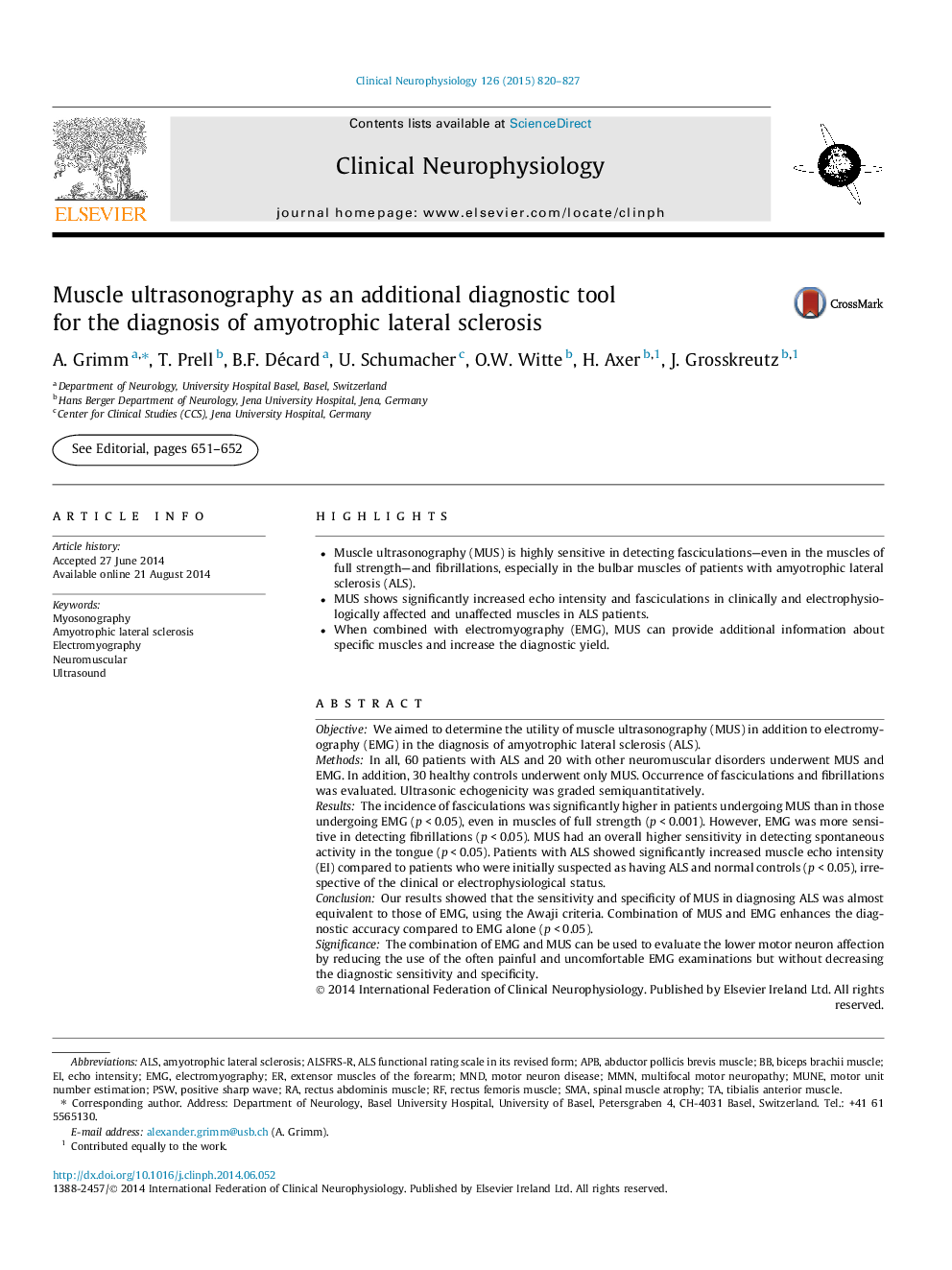| کد مقاله | کد نشریه | سال انتشار | مقاله انگلیسی | نسخه تمام متن |
|---|---|---|---|---|
| 3043012 | 1184967 | 2015 | 8 صفحه PDF | دانلود رایگان |
• Muscle ultrasonography (MUS) is highly sensitive in detecting fasciculations—even in the muscles of full strength—and fibrillations, especially in the bulbar muscles of patients with amyotrophic lateral sclerosis (ALS).
• MUS shows significantly increased echo intensity and fasciculations in clinically and electrophysiologically affected and unaffected muscles in ALS patients.
• When combined with electromyography (EMG), MUS can provide additional information about specific muscles and increase the diagnostic yield.
ObjectiveWe aimed to determine the utility of muscle ultrasonography (MUS) in addition to electromyography (EMG) in the diagnosis of amyotrophic lateral sclerosis (ALS).MethodsIn all, 60 patients with ALS and 20 with other neuromuscular disorders underwent MUS and EMG. In addition, 30 healthy controls underwent only MUS. Occurrence of fasciculations and fibrillations was evaluated. Ultrasonic echogenicity was graded semiquantitatively.ResultsThe incidence of fasciculations was significantly higher in patients undergoing MUS than in those undergoing EMG (p < 0.05), even in muscles of full strength (p < 0.001). However, EMG was more sensitive in detecting fibrillations (p < 0.05). MUS had an overall higher sensitivity in detecting spontaneous activity in the tongue (p < 0.05). Patients with ALS showed significantly increased muscle echo intensity (EI) compared to patients who were initially suspected as having ALS and normal controls (p < 0.05), irrespective of the clinical or electrophysiological status.ConclusionOur results showed that the sensitivity and specificity of MUS in diagnosing ALS was almost equivalent to those of EMG, using the Awaji criteria. Combination of MUS and EMG enhances the diagnostic accuracy compared to EMG alone (p < 0.05).SignificanceThe combination of EMG and MUS can be used to evaluate the lower motor neuron affection by reducing the use of the often painful and uncomfortable EMG examinations but without decreasing the diagnostic sensitivity and specificity.
Journal: Clinical Neurophysiology - Volume 126, Issue 4, April 2015, Pages 820–827
